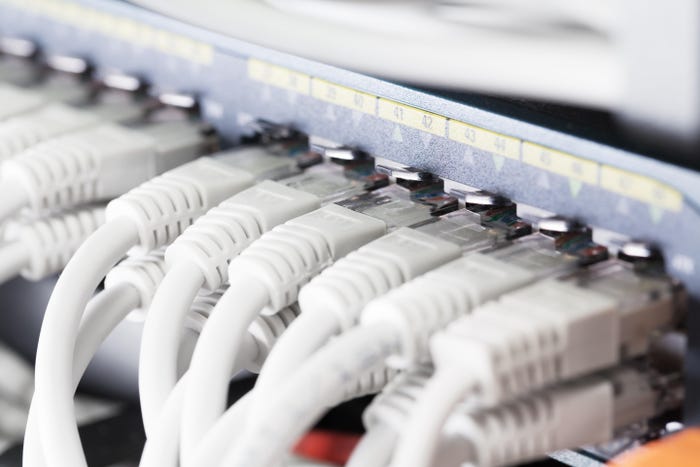Satellite Operators Team to Pursue Direct-to-Device Opportunity
New mobile association seeks help developing integrated terrestrial and non-terrestrial network (NTN) services for smartphones and IoT devices worldwide.
February 15, 2024

A group of five prominent satellite operators has launched a new association to accelerate the emergence of direct-to-device (D2D) services for use by businesses and consumers.
Introduced on February 9, the Mobile Satellite Services Association’s founding members include ViaSat, Ligado Networks, Terrestar Solutions, Omnispace, and Al Yah Satellite Communications Company.
What they need to eventually succeed in building an open standards-based interoperable framework is the buy-in of mobile phone makers, chipset vendors, government groups, and mobile operators into the MSSA's planned ecosystem.
The MSSA’s charter members claim they bring to the table over one hundred megahertz of L- and S-band spectrum that has already been allocated and licensed for a range of services.
Coming Soon to Mobile World Congress 2024
The fledgling association will be attending the fast-approaching Mobile World Congress (MWC), a global mobile event, to recruit additional members, according to an MSSA spokesperson.
The MSSA has “a vision of integrating terrestrial and non-terrestrial network (NTN) services to deliver scalable, sustainable, and affordable connectivity to any device, anytime, anywhere.” That includes uniform chipsets that mobile handsets, IoT modules, and more devices can use to operate anywhere in the world despite what countries currently have for cellular services. “Once a user loses a cell signal, the handsets will switch over to the satellite connection,” explained Jacques LeDuc, Founding Member and Treasurer of the MSSA. He is also CEO of Terrestar Solutions, a Canadian satellite operator serving the country’s vast land mass that lacks cellular service.
Sought-after MSSA services would include non-proprietary offerings, which could serve as much-needed redundancy for businesses operating in areas with suboptimal cell service. Being able to use a set of interoperable services globally would also enable the long-term goal of mobile subscribers to roam the world, explained LeDuc.
“MSSA is trying to prevent fragmentation in the standards and promote interoperability for Direct-to-Device (D2D) satellite communications,” said Dave Bolan, Research Director at the Dell’Oro Group, a global technology market research firm. “Currently, MNOs and/or device manufacturers are enabling D2D satellite communications individually with different satellite service providers. They may or may not be following 3GPP standards with different signaling standards, he cautioned. “The MSSA believes to scale D2D satellite communications, interoperability is key, which they are promoting.”
The D2D NTN method allows a smartphone or an IoT device to connect directly to a satellite without an intermediate gateway when the device is out of range of an MNO's coverage area. To date, it has been focused on SMS messaging, explained Bolan.
The MSSA Take
"The MSSA is a game-changer for businesses, offering unparalleled connectivity that spans critical sectors like cellular, industrial, government, agriculture, maritime, automotive, and emergency services," said LeDuc. It's more than an association; it's about stepping into a future where everyone and every business, no matter the size, benefits from the advancements made by current mobile satellite license holders. This connectivity is key to smoother operations and enhanced safety for all."
The non-profit MSSA claims it intends to align with the 3rd Generation Partnership Project (3GPP) standards to extend terrestrial mobile coverage for both Mobile Network Operator (MNO) and Over-the-Top (OTT) internet services. It also plans to work with the GSMA to reach its goal of device interoperability.
The Race is On
The Deloitte Center for Technology, Media & Telecommunications (TMT), discussed the market in its TMT 2024 Outlook.
There is a race to build a new set of satellite-enabled global telecommunications services for consumers, enterprises, and governments. Basic services for emergency communication, text messages, and IoT monitoring have already started.
"To help make this a reality, capital is being raised, satellites are being launched, chips have been developed, regulatory frameworks established, and agreements with mobile network operators are being secured," the Deloitte analysts wrote. "Some are very bullish on the potential size of the market (reaching tens of billions of dollars in the next ten years), while others are expecting it to take a long time to mature and generate sufficient revenue.3" In either case, they concluded, "this could represent an opportunity to significantly increase the size of the global satellite communications market."
What about the other satellite-to-cell phone efforts?
MSSA has launched and faces ongoing competition from satellite-to-phone services from the likes of Lynk Global, AST Space Mobile, T-Mobile and SpaceX, and Apple-Globalstar. These players see the use of cellular spectrum from their MNO alliances to quickly build a large customer base.
Two critical questions for Enterprise IT are:
What is the timing for satellite-to-cellphone services? SpaceX-owned Starlink claimed its satellite-to-cellphone (NTN) service will launch in 2024. The Musk-owned company said in mid-October it will first offer SMS, followed by voice and data services, and IoT connectivity in 2025.
Will the latest developments accelerate the availability of satellite services? What remains to be seen is how quickly emerging satellite services can expand and gain broad acceptance from businesses, financiers, regulators, and countries around the globe.
Related articles:
About the Author
You May Also Like




